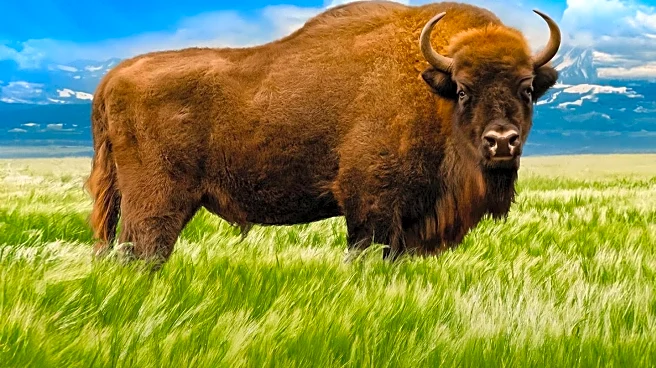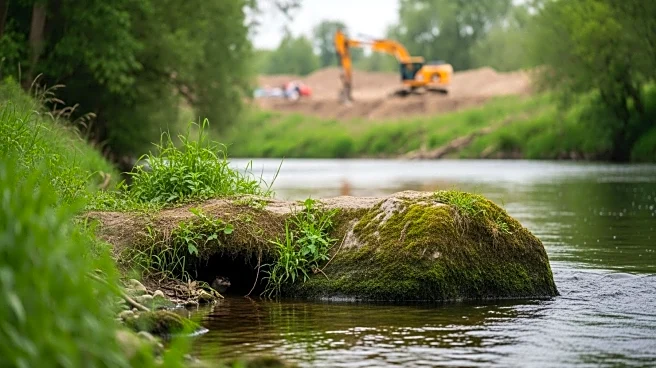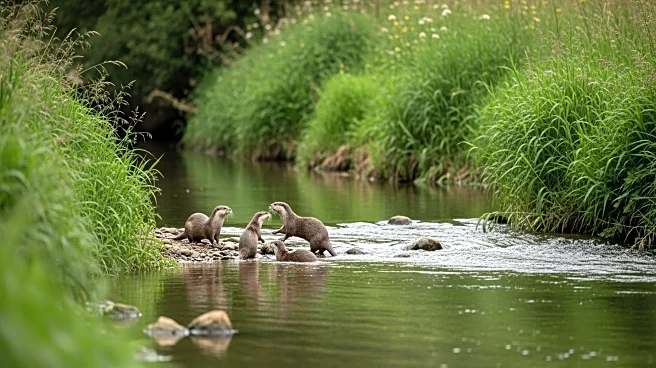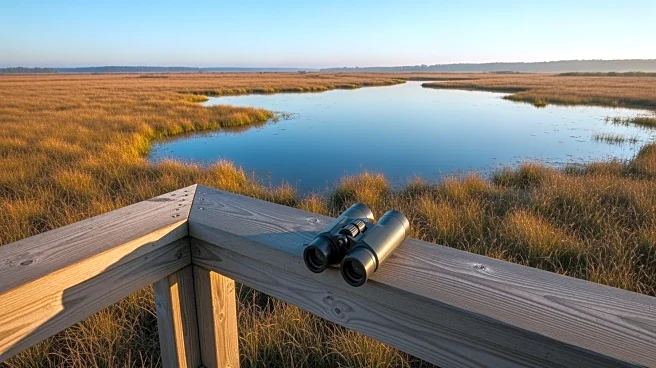What's Happening?
The National Trust has introduced six female water buffalo to a 120-acre site at Tattiscombe in West Exmoor, Devon. This initiative aims to restore the agricultural land to its natural wetland state. Known
as 'wetland architects,' the buffalo use their hooves to churn soil, create wallows, and maintain open ponds, which helps slow water flow and improve the landscape's resilience to floods and droughts. The buffalo are expected to create a variety of habitats, enhancing biodiversity by providing new niches for wildlife. The project is part of a broader effort to use these animals, which are more suited to wet conditions than domestic cattle, to boost biodiversity without heavy machinery.
Why It's Important?
This initiative is significant as it represents a shift towards sustainable land management practices that prioritize ecological restoration. By using water buffalo, the National Trust aims to enhance biodiversity and improve the resilience of the landscape to climate change impacts. This approach could serve as a model for other conservation projects, highlighting the potential of using native or well-adapted species to manage and restore natural habitats. The success of this project could influence public policy and conservation strategies, promoting a more harmonious relationship between agriculture and natural ecosystems.
What's Next?
The National Trust will monitor the impact of the buffalo on the landscape, tracking changes in water flow, plant diversity, and wildlife populations over the coming years. The results of this monitoring will inform future conservation efforts and could lead to the expansion of similar projects in other regions. Stakeholders, including environmental groups and policymakers, will likely be interested in the outcomes, which could influence broader conservation strategies and funding priorities.











